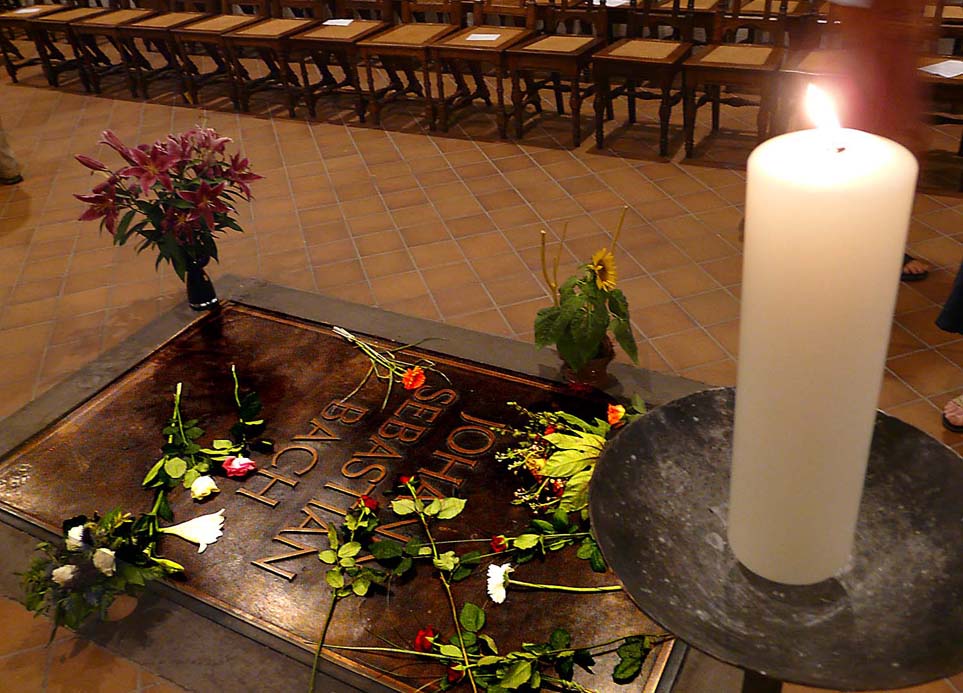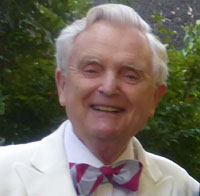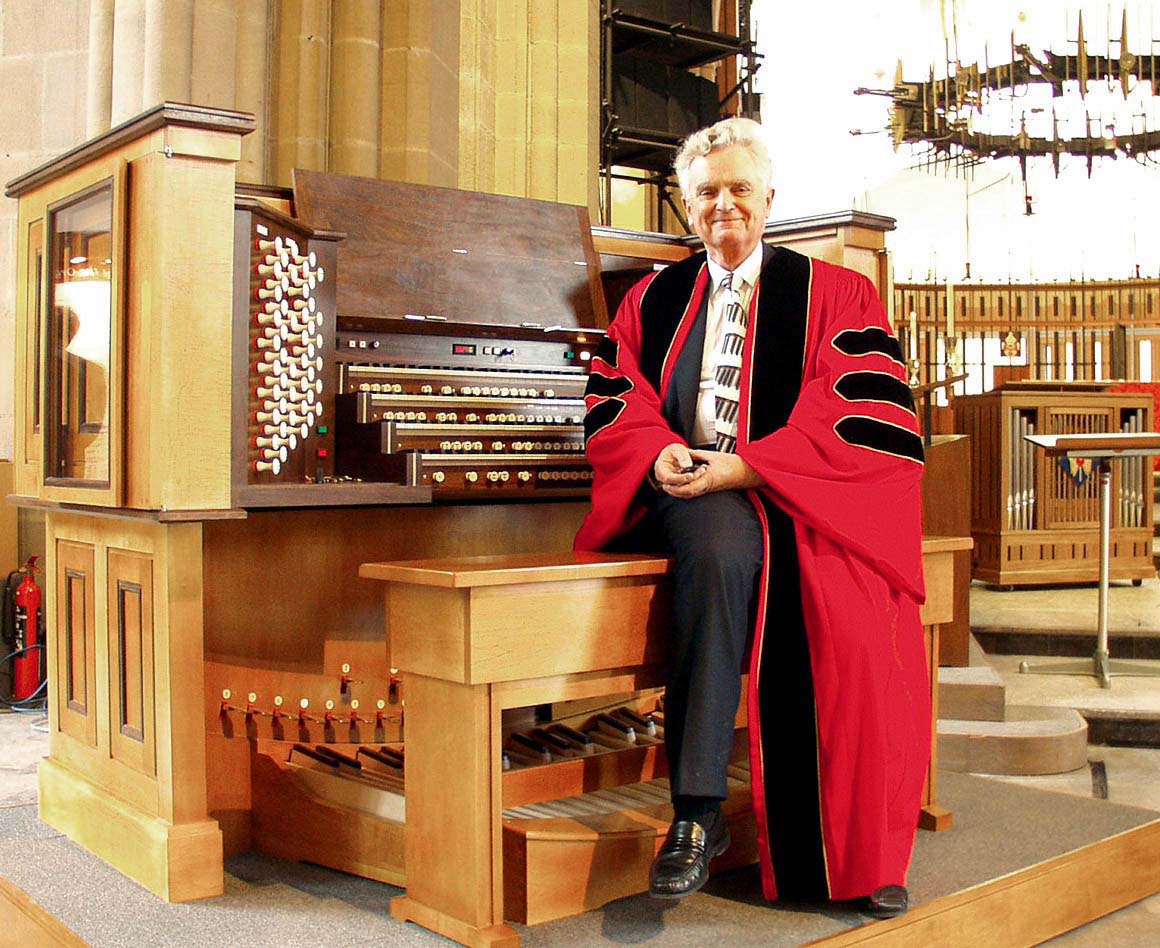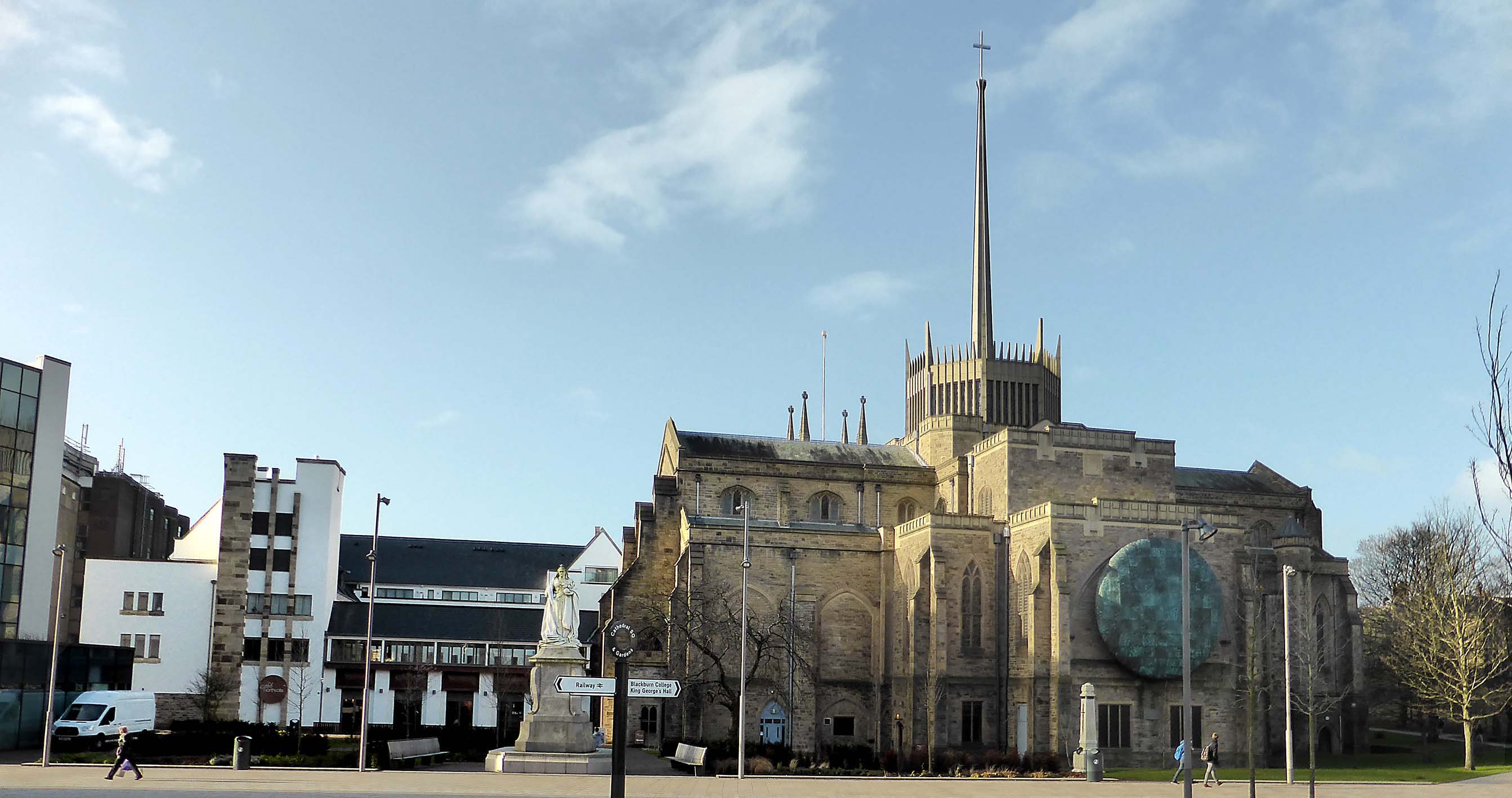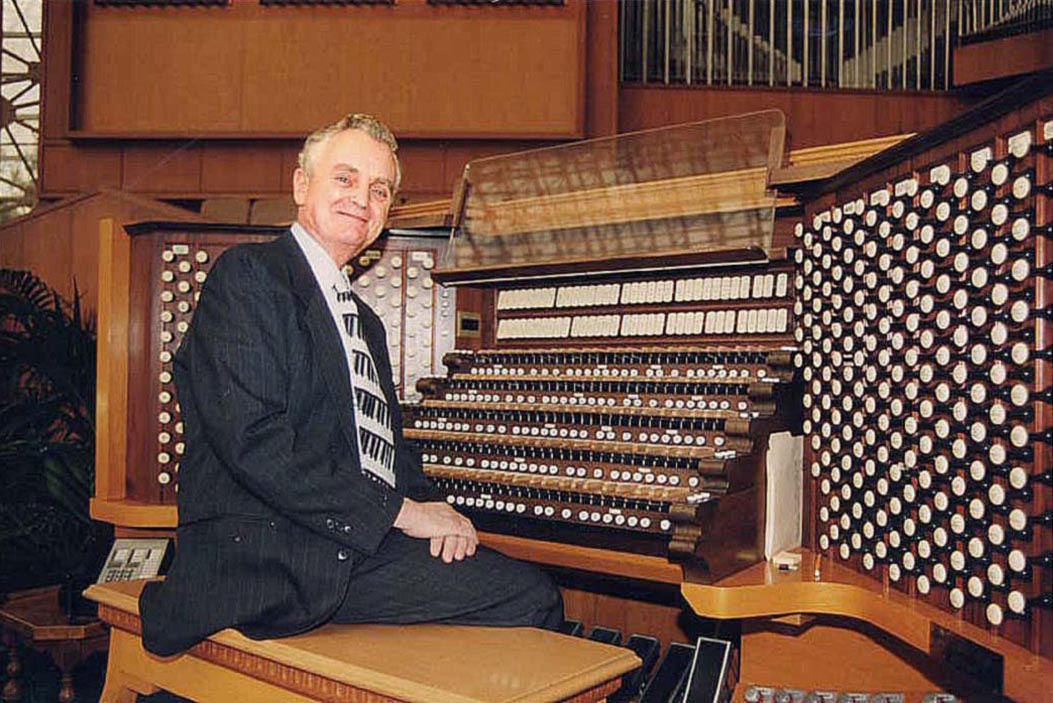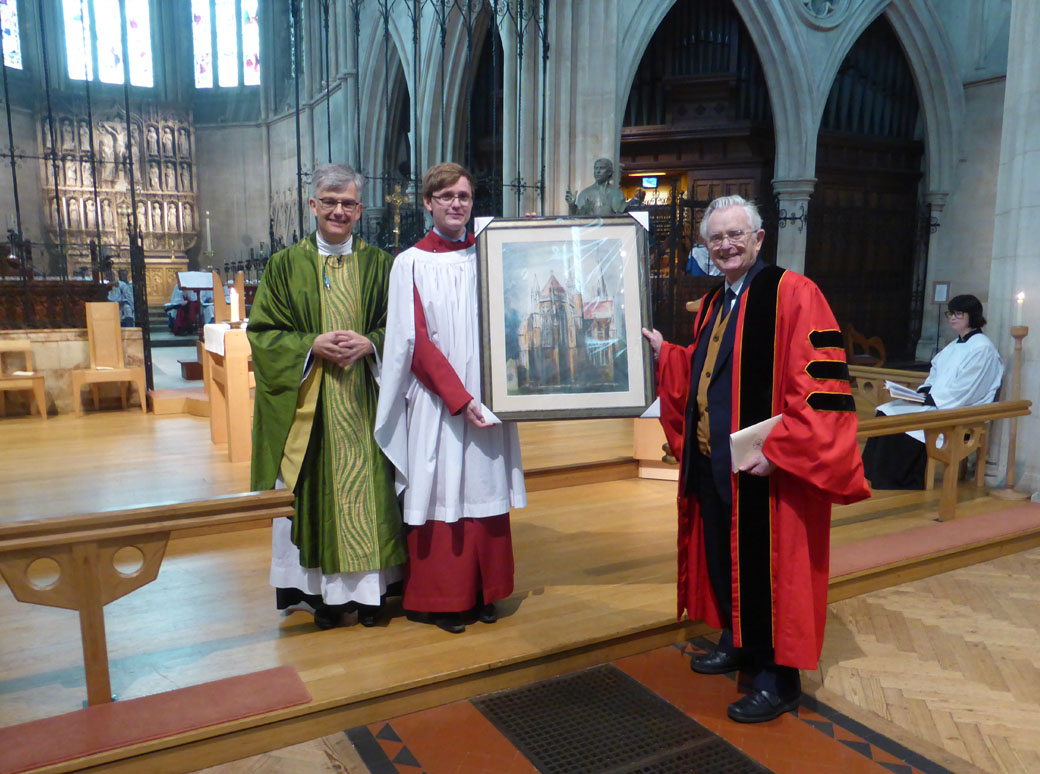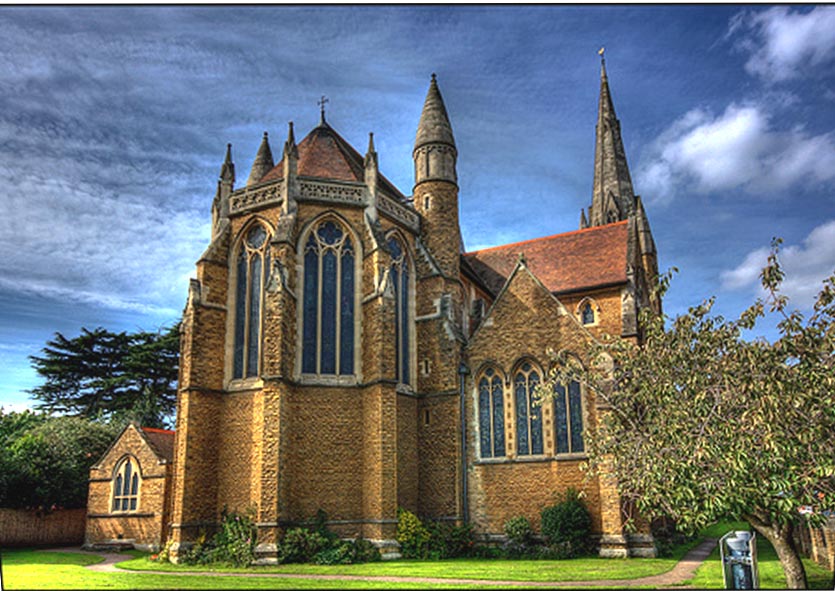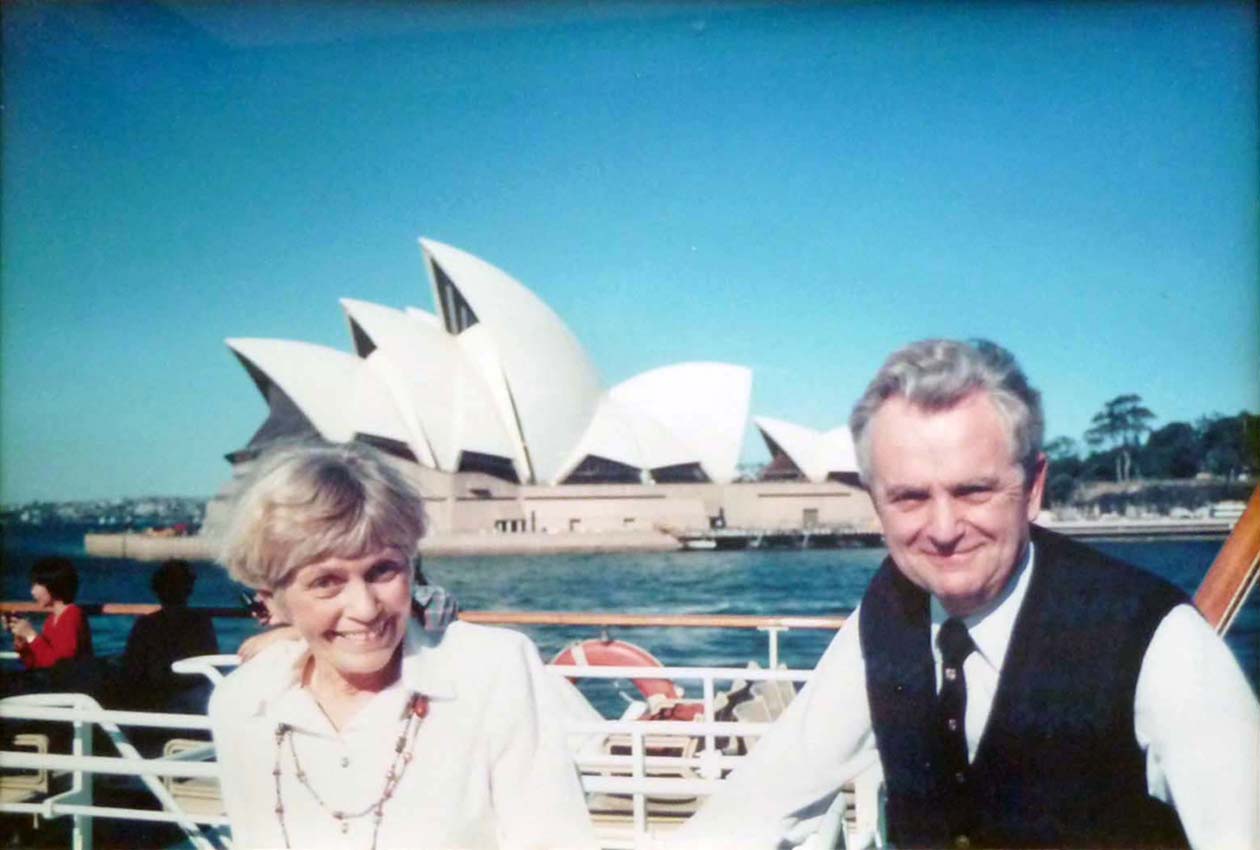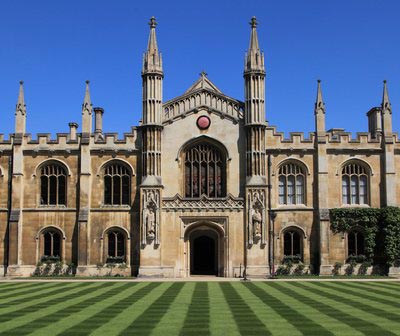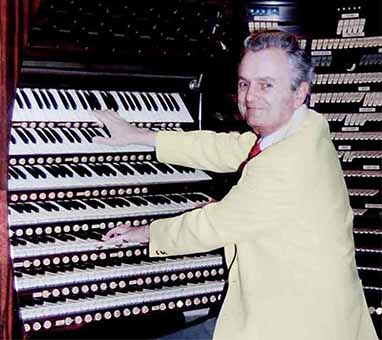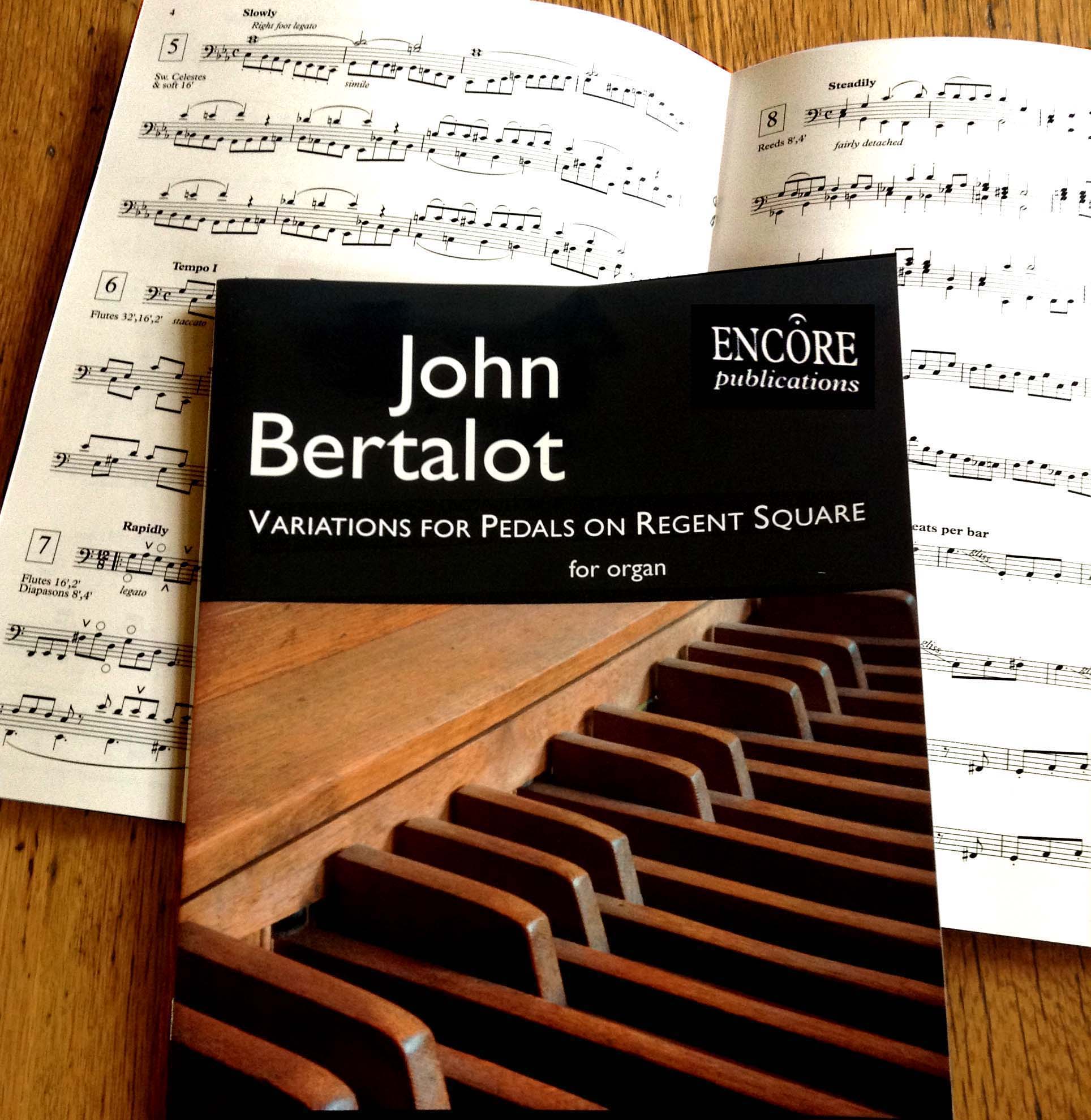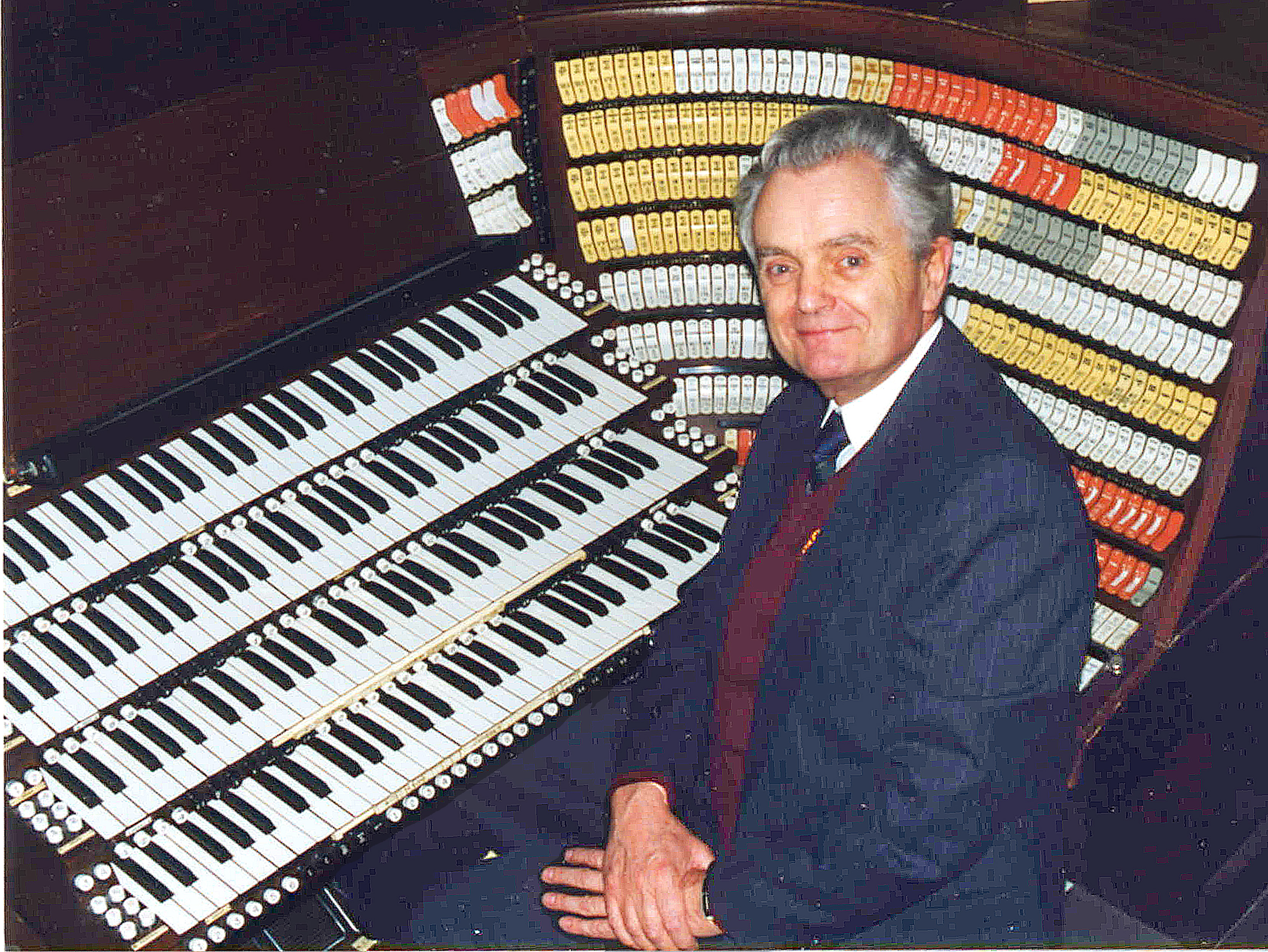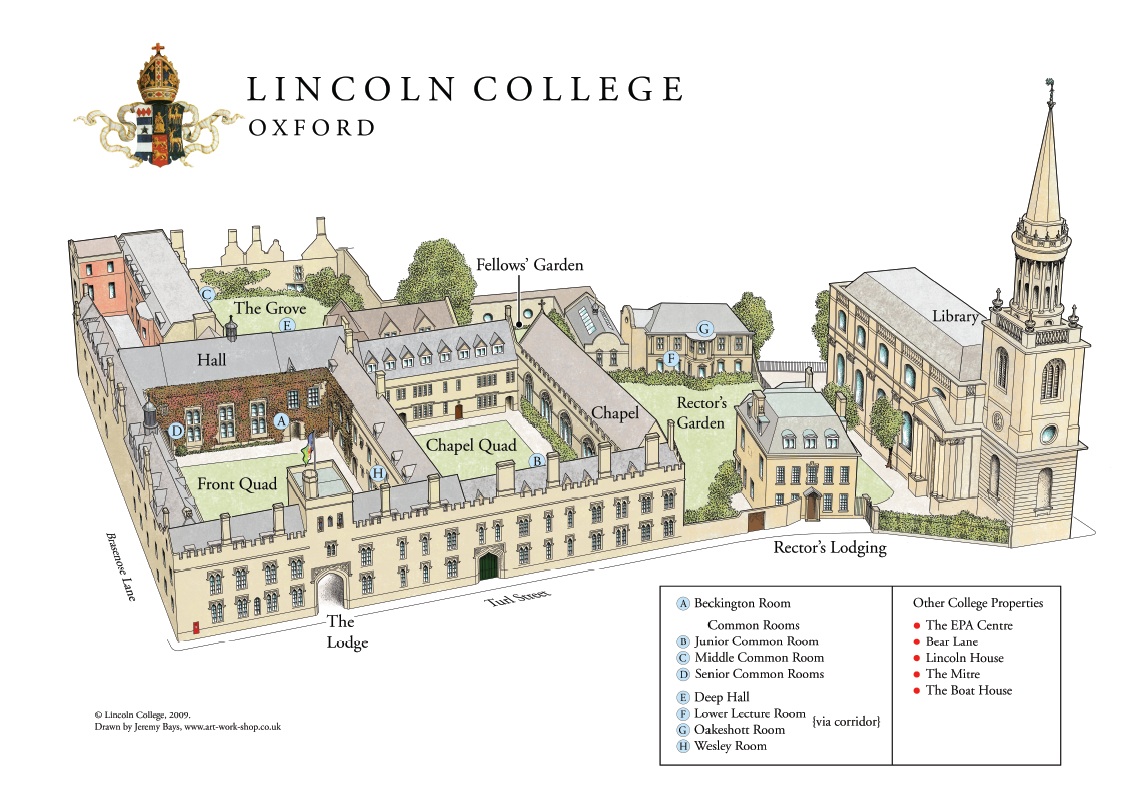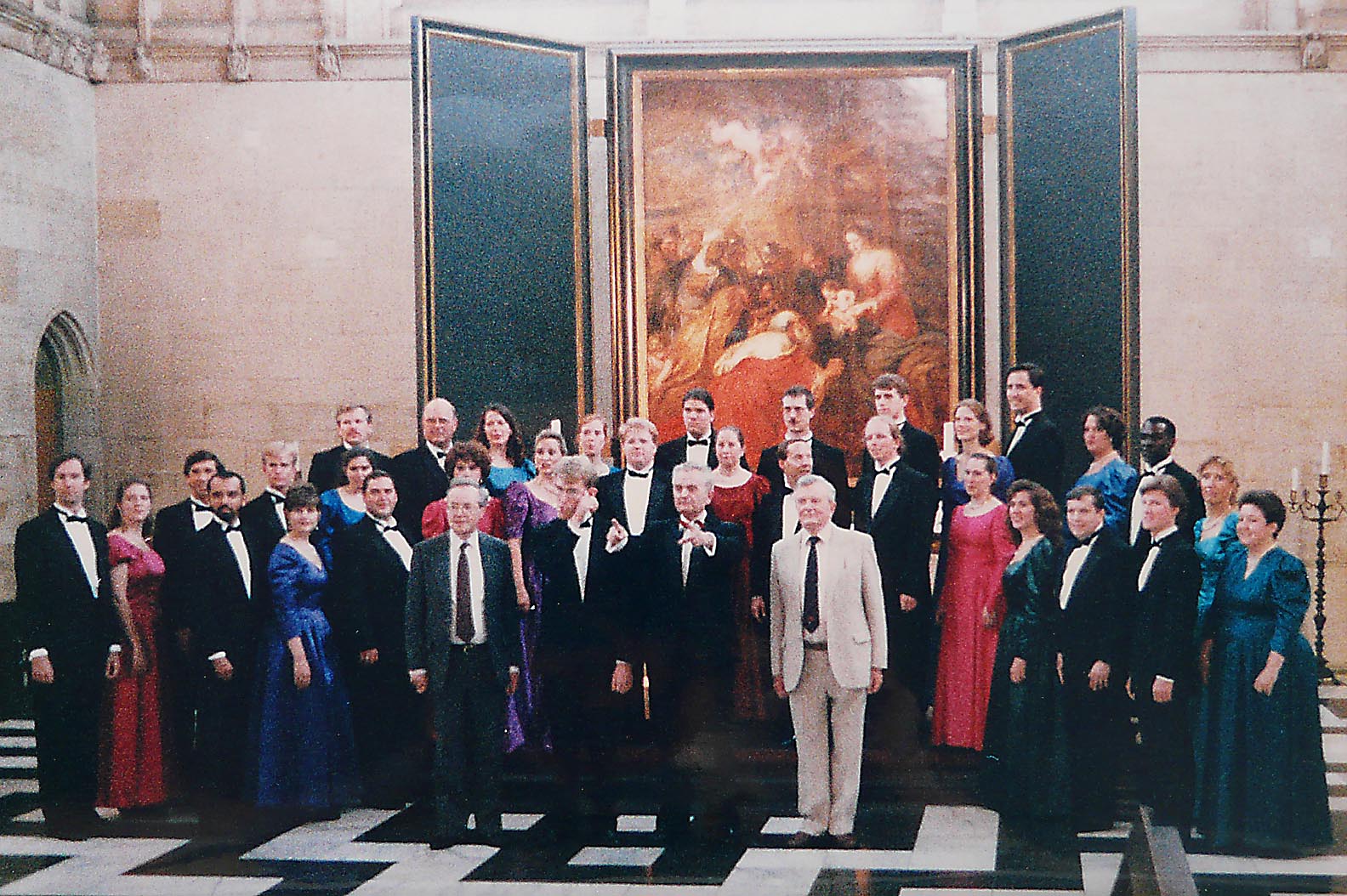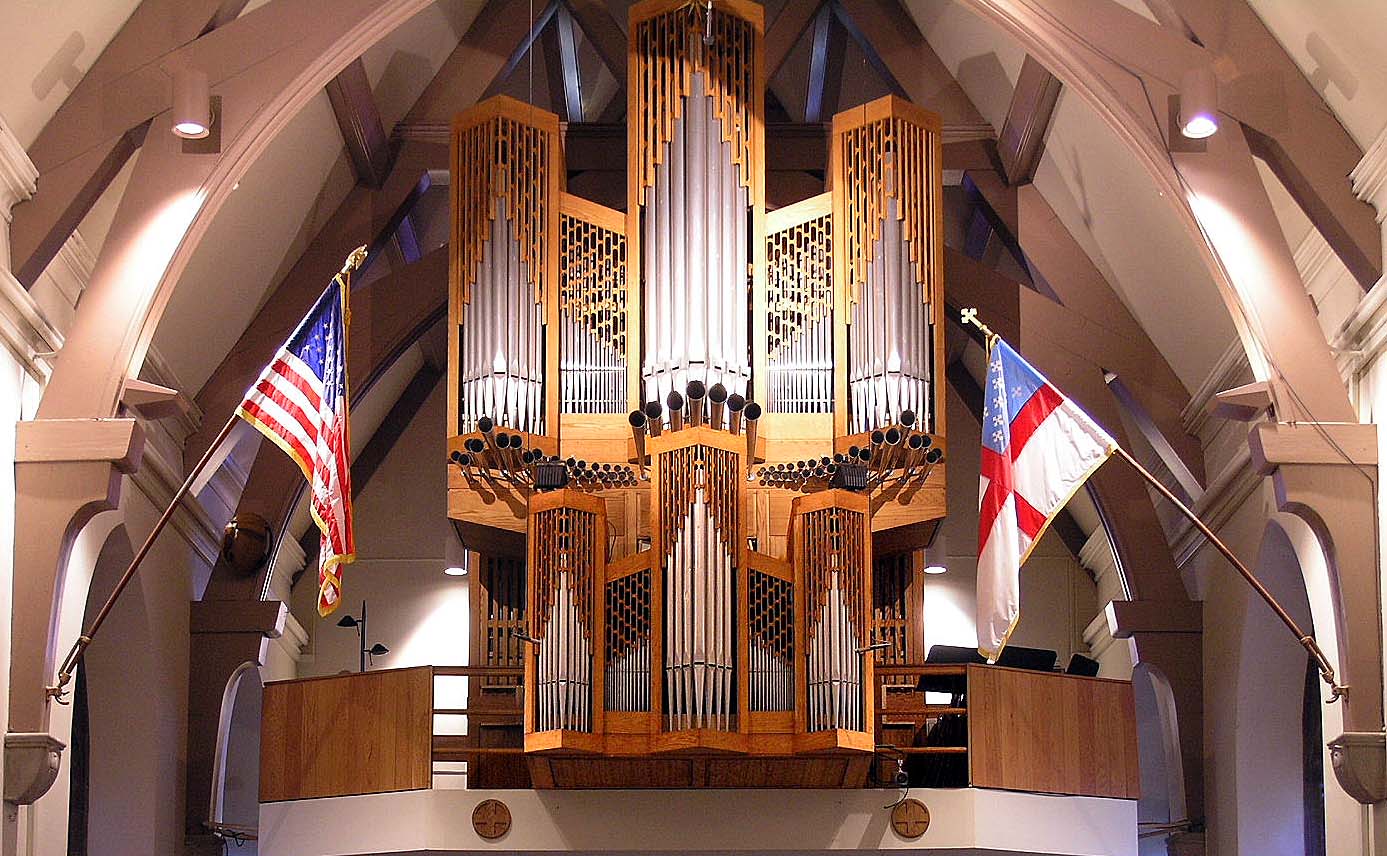NUMERICAL SYMBOLISM
(and more)
in
Bach's
ST MATTHEW PASSION
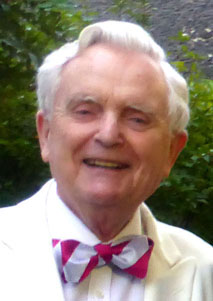
Copyright by John Bertalot who gave lectures on this subject at
King's College, Cambridge, August 1986
Southwell Minster, July 2000
The Hereford Three Choirs' Festival, August 2003
and Blackburn, September 2010
I seem to remember reading, last Millennium, that Bach's score of the SMP was beautifully written - with the Evangelist's part in red.
Bach poured his soul into this work much as Elgar did for Gerontius when he wrote at the end of the score,'This is the best of me...'
The SMP was probably first performed in St. Thomas' Church, Leipzig, on Good Friday, 1727,
but it was not well received for it was written in quasi operatic style, which had been specifically forbidden in Bach's contract.
One dowager said, 'God save us my children, it's like being at the opera comedy!' and the church authorities reduced Bach's salary!
He experienced a good deal of the tribulation that often comes from conflict between clergy and musicians.
(It's comforting for church musicians today to realize that Bach sometimes experienced trouble with his clergy, but he was not always the easiest of colleagues!)
St. Matthew wrote his Gospel specifically for the Jews -
frequently he refers to incidents in Jesus' life as fulfilling Old Testament prophecies
to demonstrate that Jesus must be the long awaited Messiah.
Bach seems to have wanted to echo these references to the OT in his music; but how could he do it?
There is only one book in the OT to which numbers may recognisably be applied (apart, of course, from the book of Numbers!) and that is the book of Psalms.
Dr. Robin Leaver from Princeton wrote that 'the psalms were a constant source of inspiration to JSB'.
Again and again Bach set words from the psalms in his choral works.
My interest in Bach number symbolism was first aroused many years ago when I came across Dr Karl Geiringer's treatise on Bach in the library of the Royal Northern College of Music where I was Senior Lecturer. Geiringer pointed out that the number of bass notes in some recitatives in the SMP referred to numbered psalms which paralleled the sentiments of those parts of the Passion narrative.
One of the examples he gave was the second half of the recitative concerning the Last Supper, when Jesus said, 'Drink ye all of this'. Geiringer pointed out that there were 116 bass notes in this part of the recitative, and that, in Psalm 116:12 we read, 'I will receive the cup of salvation.'
I wondered that, if Bach did this in the second part of a recitative, he might have also done it in the first part.
Yes, of course he did!
The first half of that recitative tells of Jesus taking the bread - 'Take, eat , this is my body', which has 34 sounding bass notes.
In psalm 34:8 we find, 'O taste and see how gracious the Lord is'.
This, needless to say, fired me up to look at many other recitatives, and I struck gold.
I found, for example, that there are 22 bass notes in the narrative telling of Christ's death, where he asks, 'My God, my God, why hast thou forsaken me?' Psalm 22 begins, 'My God, my God...why hast thou forsaken me?'
The second part of this narrative tells us that 'Jesus...yielded up the Ghost', with 31 bass notes. In psalm 31:6 we read, 'Into thy hands I commend my spirit.'
There are similar examples throughout the SMP; one of the most dramatic being the recitative where Jesus makes no answer when questioned by the High Priest:'He holds his peace'. This has 39 bass notes and 10 bars of music. Psalm 39:10 reads: 'I became dumb and opened not my mouth.'
We have already considered (in my first article) two other numerically significant examples in the SMP - 'Lord, is it I?' with 11 entries for the 11 disciples - the 12th disciple, Judas, coming shortly afterwards, and 'Truly, this was the Son of God' where there are 14 bass notes - i.e.Bach saying, 'Yes, I believe that truly this was the Son of God.'
By the way, there are 16 bass notes in the orchestral part of this section which could portray Jesus' descent for 3 days into hell: for Psalm 16:11 reads, 'Thou shalt not leave his soul in hell.'
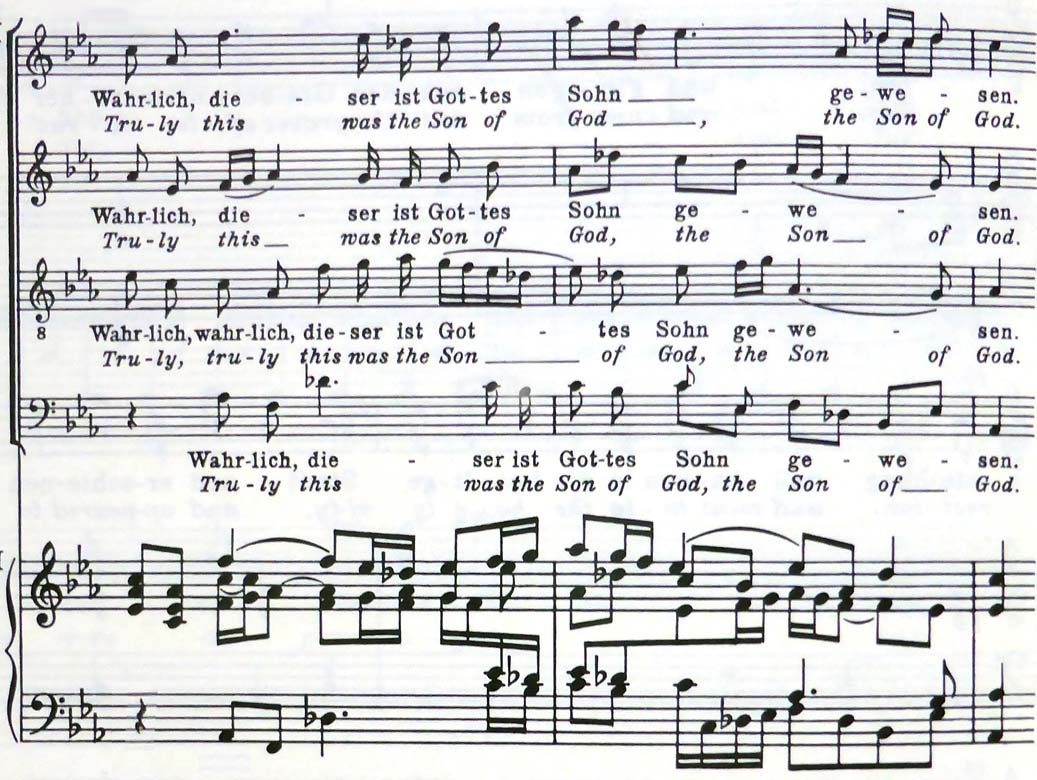
Readers may wish to do further musical research in this fruitful field.
It is, however, quite easy when writing recitatives to have as many, or as few, bass notes as one needs,
and so it is not as difficult to construct this music as it might seem.
For example, when I gave this talk in Blackburn I composed a short recitative about looking forward to a cup of tea after the talk.
The simplest bass for the recitative is on the second stave.
But I wanted a more interesting bass part, so I wrote the second, more musical bass line (3rd Stave).
Please count the number of notes in that second continuo part. (NB A tied note is counted as one note!)

A case could be made that Bach intended the SMP to comprise a certain number of bars for, like the St. John Passion, the SMP went through several revisions.
I counted the bars and found that there were 1110 bars in the first half and 1354 in the second half. I looked at these for a long time and no light came.
But then realized that the first chorus of the second half was 123 bars long - and this, as we have already seen, is a significant number in Bach symbolism, being 41 x 3, which are Bach's own number 41, and the 3 of the Trinity.
I further discovered that, at the first performance, the first half had ended with the chorale, Meinen Jesum lass ich nicht, (With Thee, Jesus, will I stay). This chorale is 13 bars long.
The resulting mathematics, when this chorale is added to the end of the first half, are fascinating.
i.e. 1110+13, and 1354 -123 = (1231)
Thus the total number of bars of the SMP may be grouped:
1 123, 123, 123 1
There's much more to discover about the SMP if you have the time and the inclination.
For example: count the number of times that Jesus sings,
and then count the number of choruses.
You will discover that each comes to a significant Bachian number.
Secondly, count the number of times that the Evangelist sings,
and the number of solo items.
They will come to the same number.
But then ADD all these four numbers together and you'll discover another unexpected Bachian number.
It's wholly amazing what Bach achieved in creating this work,
not only musically - which is beyond anything that anyone had composed before,
but also in its construction - which has lain hidden for generations!
May your own research be fruitful.
Bach's grave in St Thomas' Church, Leipzig: John Bertalot, June 2008
.